Eco-conscious consumers seeking sustainable alternatives for their kitchen tools will find a wealth of benefits in eco-friendly cutting boards. These cutting boards, made from materials such as wood, bamboo, natural rubber, and stone, offer numerous advantages over their plastic counterparts.
Not only are they durable and versatile, but they also minimize the potential exposure to harmful toxins. In this article, readers will discover a selection of recommended eco-friendly cutting board brands, each accompanied by information on their sustainability practices and pricing.
Key Takeaways
- Cutting boards made with clean materials are crucial for kitchen safety and hygiene.
- Eco-friendly cutting boards are non-toxic, sustainable, and reduce the use of resources and energy.
- Wood, bamboo, natural rubber, and stone are sustainable materials for cutting boards.
- Recommended eco-friendly cutting board brands include Newly, Public Goods, Our Place, Chop Values, and Bambus.
The Importance of Eco-friendly Cutting Boards
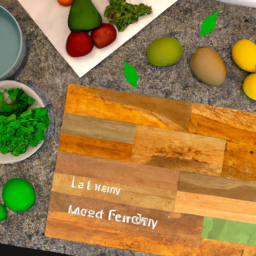
Eco-friendly cutting boards are important in the kitchen as they provide a sustainable and non-toxic option for food preparation. These cutting boards offer several benefits for food safety and sustainability.
Firstly, eco-friendly cutting boards are made from materials that are free from toxins, such as phthalates and polyvinyl chloride, which can be found in plastic cutting boards. This ensures that no harmful chemicals leach into the food during preparation.
Additionally, eco-friendly cutting boards are made from sustainable materials like wood, bamboo, and natural rubber, which are renewable resources. This helps to reduce the environmental impact of cutting board production.
Harmful Effects of Plastic Cutting Boards
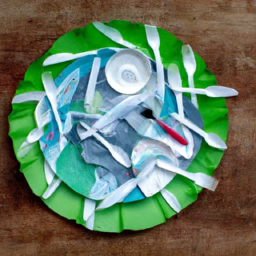
Plastic cutting boards, on the other hand, may contain toxins such as phthalates and polyvinyl chloride. These toxins can leach into food during food preparation, posing potential health risks. Phthalates, in particular, have been linked to hormonal disruptions and reproductive issues.
Additionally, the production of plastic cutting boards requires significant resources and energy, contributing to the environmental impact of plastic waste and pollution. Plastic cutting boards are not biodegradable and can persist in landfills for hundreds of years. Furthermore, when plastic cutting boards become worn or damaged, they cannot be easily recycled and end up adding to the growing plastic waste problem.
To mitigate these harmful effects, eco-friendly alternatives such as wood, bamboo, and natural rubber cutting boards are recommended. These materials are non-toxic, sustainable, and have a lower environmental impact.
Advantages of Sustainable Materials for Cutting Boards
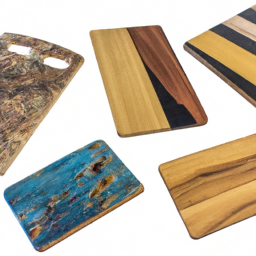
Wood, bamboo, and natural rubber are durable and versatile materials that offer numerous advantages for cutting boards.
Advantages of Bamboo Cutting Boards:
- Bamboo is a sustainable material that grows quickly and does not require pesticides or fertilizers.
- Bamboo cutting boards are naturally antimicrobial, making them more hygienic than other materials.
- They are also gentle on knives, reducing the risk of dulling or damaging the blades.
Benefits of Natural Rubber Cutting Boards:
- Natural rubber cutting boards have a good grip, preventing slips and accidents while cutting.
- They are easy to clean and maintain, requiring simple handwashing with mild soap and water.
- Natural rubber is a renewable resource, making these cutting boards an eco-friendly choice.
Overall, both bamboo and natural rubber cutting boards offer durability, sustainability, and unique benefits that make them excellent choices for eco-friendly kitchens.
Durable and Versatile Wood Cutting Boards
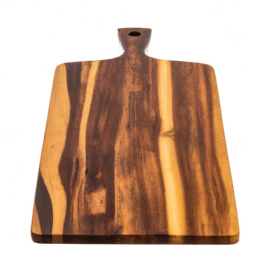
One popular option for durable and versatile cutting boards is a solid wooden board, which provides a sturdy surface for various kitchen tasks. Wood cutting boards offer several benefits for the kitchen.
Firstly, wood is less likely to dull knives compared to other materials like plastic or glass. Additionally, wood has natural antimicrobial properties that help prevent the growth of bacteria.
To care for and maintain wood cutting boards for longevity, it is important to clean them with warm, soapy water after each use and dry them thoroughly. It is also recommended to oil the board regularly to prevent drying and cracking. Avoid soaking wood cutting boards in water or exposing them to extreme temperatures, as this can cause warping.
Affordable and Sustainable Bamboo Cutting Boards
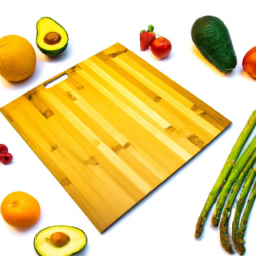
Bamboo cutting boards are a popular choice due to their affordability and sustainability, making them an ideal option for eco-conscious individuals. Compared to other eco-friendly materials, bamboo cutting boards offer several benefits:
- Durability: Bamboo is a durable material that can withstand heavy use and resist knife marks.
- Natural Antibacterial Properties: Bamboo contains an antimicrobial agent called bamboo kun, which helps prevent the growth of bacteria on the surface.
- Gentle on Knives: Bamboo cutting boards are softer than materials like glass or stone, which helps to keep knives sharp.
To properly care for and maintain bamboo cutting boards, consider the following tips:
- Hand wash with warm soapy water after each use and dry thoroughly.
- Avoid soaking or submerging the board in water as it can cause warping.
- Apply food-safe mineral oil regularly to keep the bamboo moisturized and prevent cracking.
- Avoid using harsh detergents or abrasive cleaners that can damage the surface.
- Store the cutting board in a dry and well-ventilated area to prevent mold or mildew growth.
Low Maintenance Natural Rubber Cutting Boards
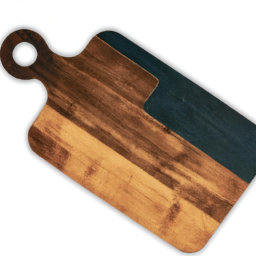
Rubber cutting boards offer a low maintenance option for individuals seeking an alternative to traditional materials. Natural rubber cutting board alternatives have gained popularity due to their unique benefits.
One of the main advantages of using natural rubber cutting boards is their durability. Rubber is known for its resilience, making these cutting boards resistant to wear and tear. Additionally, natural rubber cutting boards provide a good grip, ensuring that food stays in place during chopping and slicing. This not only enhances safety but also improves efficiency in the kitchen.
Furthermore, rubber cutting boards are easy to clean and maintain. They can be easily washed with soap and water, and their non-porous surface prevents the growth of bacteria and odors.
Overall, natural rubber cutting boards are a practical and hygienic choice for any kitchen.
Hygienic Stone Cutting Boards and Knife Care
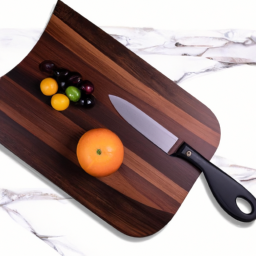
After discussing the benefits of low maintenance natural rubber cutting boards, let’s now explore the advantages of hygienic stone cutting boards and the importance of knife care.
Hygienic Stone Cutting Boards:
- Stone cutting boards, such as those made from granite or marble, offer unique benefits in terms of hygiene.
- The dense and non-porous nature of stone makes it less likely to harbor bacteria compared to other materials.
- Stone cutting boards can be easily cleaned and sanitized, reducing the risk of cross-contamination in the kitchen.
Knife Care:
- When using stone cutting boards, it’s essential to pay attention to knife care to prevent damage to the blade.
- Stone surfaces can be abrasive and may dull the knife edge over time.
- Regularly sharpening and honing the knife is crucial to maintain its sharpness and cutting performance.
- Using a cutting board made from a naturally polished stone can help minimize the impact on the knife edge.
Proper knife care and using hygienic stone cutting boards can contribute to a safe and efficient food preparation experience in the kitchen.
Considerations for Sourcing and Production of Cutting Board Materials
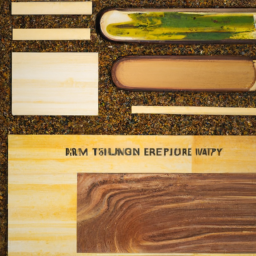
When considering the sourcing and production of cutting board materials, it is important to prioritize sustainability and ensure clean and non-toxic options. Ethical manufacturing and reducing environmental impact should be key considerations. Opting for materials that are ethically sourced and responsibly manufactured can help support fair labor practices and minimize harm to the environment.
One important consideration is the type of material used for the cutting board. Wood, bamboo, natural rubber, and stone are all sustainable options. Wood and bamboo are durable and versatile, while natural rubber provides a good grip and requires low maintenance. Stone cutting boards are hygienic but can dull knives if not naturally polished.
Additionally, it is worth researching the companies that produce cutting boards. Look for brands that prioritize sustainability, such as Newly, Public Goods, Our Place, Chop Values, and Bambus. These companies use recycled or repurposed materials, plant trees, and participate in initiatives like 1% for the Planet.
Recommended Eco-friendly Cutting Board Brands
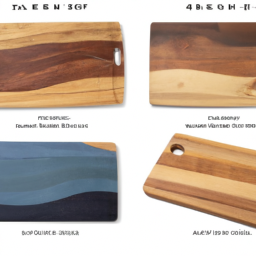
Newly, Public Goods, Our Place, Chop Values, and Bambus are some of the recommended brands for eco-conscious consumers looking for sustainable cutting boards.
- Newly’s reclaimed wood cutting boards are made from 100% recycled or repurposed materials, such as reclaimed wood and other recycled materials. They offer a range of cutting boards, including the Shibusa Serving Board made with 900 recycled chopsticks. These cutting boards, priced from $68-$78, make unique gifts. Newly is also a certified B Corporation and part of the 1% for the Planet initiative.
- Public Goods offers affordable cutting boards made from compressed paper, large wood fiber, and silicon. Their cutting boards combine the quality of wood cutting boards with the sturdiness of rubber cutting boards. Public Goods plants a tree with each new member through their partnership with Eden Reforestation Projects. The cutting boards are available in small and large sizes, ranging from $29-$38.
These brands provide eco-conscious consumers with affordable options for sustainable cutting boards, including those made from reclaimed wood.
Newly’s Reclaimed Wood Cutting Boards and Sustainability Initiatives
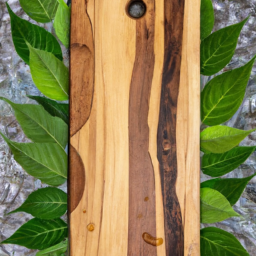
One of the key features of Newly’s reclaimed wood cutting boards is their use of 100% recycled or repurposed materials. This includes reclaimed wood and other recycled materials. Their commitment to sustainability is evident in their products. They strive to minimize their impact on the environment.
By utilizing reclaimed materials, Newly is able to give new life to old wood. This reduces the need for new resources to be harvested. Additionally, the use of recycled materials helps to reduce waste and prevent them from ending up in landfills.
Newly’s focus on sustainability extends beyond their cutting boards. They are also part of the 1% for the Planet initiative. This further demonstrates their commitment to environmental conservation.
Through their use of reclaimed materials and dedication to sustainability initiatives, Newly is making a positive impact on the environment.
Frequently Asked Questions
How Do Eco-Friendly Cutting Boards Contribute to a Sustainable Kitchen?
Eco-friendly cutting boards contribute to a sustainable kitchen by offering several benefits.
Bamboo cutting boards, for example, are a popular choice due to their sustainable nature and durability. They are made from a renewable resource, grow quickly, and require minimal energy to produce.
In contrast, plastic cutting boards have a negative environmental impact as they are often made from non-renewable resources and can release toxins.
Are There Any Health Benefits to Using Eco-Friendly Cutting Boards?
Using eco-friendly cutting boards can provide health benefits in addition to being environmentally friendly. These cutting boards are made from biodegradable materials that do not release harmful toxins into the food. This reduces the risk of cross contamination and ensures that the food prepared is safe to consume.
Eco-friendly cutting boards are also easy to clean and maintain, further promoting a hygienic kitchen environment. Overall, using these cutting boards is a smart choice for both the planet and personal well-being.
Can Eco-Friendly Cutting Boards Be Used for All Types of Food?
Eco-friendly cutting boards are suitable for all types of food. They are designed to be non-toxic and made from sustainable materials, such as wood, bamboo, and natural rubber.
These cutting boards offer a variety of options to cater to different needs and preferences. Wood cutting boards are durable and versatile, while bamboo cutting boards are affordable and moisture-resistant. Natural rubber cutting boards provide a good grip, and stone cutting boards are hygienic.
Overall, eco-friendly cutting boards are a great choice for safe and sustainable food preparation.
How Do Eco-Friendly Cutting Boards Compare to Plastic Cutting Boards in Terms of Durability?
Eco-friendly cutting boards, compared to plastic ones, are known for their durability and longevity. Made from sustainable materials such as wood, bamboo, and natural rubber, eco-friendly cutting boards are designed to withstand heavy use in the kitchen.
Unlike plastic cutting boards that can easily warp or crack over time, eco-friendly options are more resistant to wear and tear. This makes them a reliable choice for home cooks who want a cutting board that will last for years while minimizing their impact on the environment.
What Are Some Eco-Friendly Alternatives to Traditional Cutting Board Materials?
Bamboo cutting boards and cork cutting boards are two eco-friendly alternatives to traditional cutting board materials.
Bamboo cutting boards are sustainable and affordable, as bamboo is a fast-growing and renewable resource.
Cork cutting boards are also sustainable, as cork is harvested from the bark of cork oak trees without harming them.
Both materials are durable and provide a good surface for cutting and chopping.
These eco-friendly options are great choices for those looking to reduce their environmental impact in the kitchen.